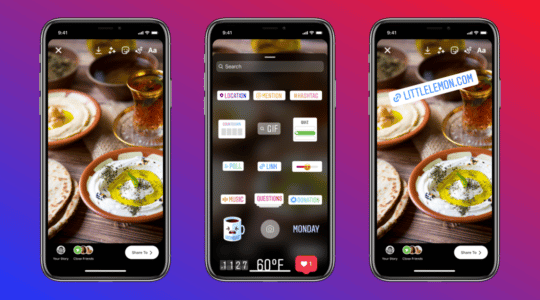2019 Update: HasOffers has rebranded to TUNE! TUNE is the same great technology behind HasOffers, now enhanced with new tools and features for performance advertisers and affiliate networks. Check out our new platform features page, sign up for a free trial, or read the rebrand announcement.
TechCrunch is reporting that Apple has already started rejecting new app submissions that access UDID. We already knew access to UDID would be phased out at some point in the near future. What we didn’t know was that Apple would be implementing the phase out by blocking apps submitted to the store.
Jim Payne of MoPub is quoted in the TechCrunch article as stating, “The UDID is essential for managing the conversion loop.” While Payne is correct in that the major mobile ad networks are currently relying on UDID to track mobile app conversions, that’s not the only way to accurately track mobile ads.
As I mentioned in my previous blog post where I chastised the use of cookie tracking as a form of app install tracking, HasOffers addresses the mobile ad tracking problem quite effectively.
Mobile App Tracking bypasses the need for UDID by using what we call user fingerprinting. By gathering several pieces of anonymous data about a user at the time of an ad click, you can achieve a high degree of accuracy in attributing a mobile app conversion back to that user when they eventually install an app on their iPhone (or Android device). The closer the proximity between engagement with the advertisement and the actual conversion, the higher the degree of accuracy, but even if the events aren’t closely connected, you can still track the transaction.
The result is a mobile ad tracking solutions that allows advertisers to manage their mobile ad campaigns with a high degree of confidence using this anonymous fingerprinting solution.
While the TechCrunch article goes on to point out that some developers are getting around the issue of Apple blocking access to UDID by asking user permission, I don’t see that as a viable long term solution. The number of people who will elect to opt in to providing UDID will be significantly less than the total number of people who download and install an app, which will creative a significant gap in the ability for advertisers to effectively track campaigns.
I would anticipate HasOffers seeing more competition from companies who attempt to develop competing alternatives to Mobile App Tracking, rather than continuing to see ongoing usage of UDID as a means of tracking in the long term.
The bigger question is, how quickly will developers move to implement tracking solutions that avoid the UDID issue altogether?
Author
Becky is the Senior Content Marketing Manager at TUNE. Before TUNE, she handled content strategy and marketing communications at several tech startups in the Bay Area. Becky received her bachelor's degree in English from Wake Forest University. After a decade in San Francisco and Seattle, she has returned home to Charleston, SC, where you can find her strolling through Hampton Park with her pup and enjoying the simple things between adventures with friends and family.




Hello,
How can you prove mobile fingerprinting is reliable? Is there some public research about it?
On mobile Safari, iPhone from Bob is pretty similar to iPhone from Alice…
Thanks
Kabam and Zynga are both using Mobile App Tracking in their products as a tracking solution.
and how does that make it reliable?
Hi again Gordan,
Actually you’re right, that doesn’t “make it reliable.” I’m assuming Jake meant that it’s reliable enough to be trusted by those companies. As far as I know, there is no public research about it and obviously our own data is not an objective source. For now, we’re relying on our larger customers to provide feedback.
[…] According to its blog, HasOffers says that “Mobile App Tracking bypasses the need for UDID by using what we call user fingerprinting. By gathering several pieces of anonymous data about a user at the time of an ad click, you can achieve a high degree of accuracy in attributing a mobile app conversion back to that user when they eventually install an app on their iPhone (or Android device). The closer the proximity between engagement with the advertisement and the actual conversion, the higher the degree of accuracy.” […]
[…] According to a blog, HasOffers says that “Mobile App Tracking bypasses a need for UDID by regulating what we call user fingerprinting. By entertainment several pieces of unknown information about a user during a time of an ad click, we can grasp a high grade of correctness in attributing a mobile app acclimatisation behind to that user when they eventually implement an app on their iPhone (or Android device). The closer a vicinity between rendezvous with a announcement and a tangible conversion, a aloft a grade of accuracy.” […]
[…] According to its blog, HasOffers says that “Mobile App Tracking bypasses the need for UDID by using what we call user fingerprinting. By gathering several pieces of anonymous data about a user at the time of an ad click, you can achieve a high degree of accuracy in attributing a mobile app conversion back to that user when they eventually install an app on their iPhone (or Android device). The closer the proximity between engagement with the advertisement and the actual conversion, the higher the degree of accuracy.” […]
[…] Tracking Mobile Ads in a World Without UDID […]
[…] Reklam ağlarının kullanıcıya göre daha uygun reklamlar göstererek, dönüşüm oranlarını arttırmasını sağlayan UDID olmayınca reklamların karlılık oranlarının düşeceğine kesin gözle bakılıyor. Diğer yandan şimdiden reklamcıların UDID’e bağımlılığını dolaylı yollardan ortadan kaldıran alternatiflerden bahsedilmeye ve farklı çözümler sunulmaya başladı bile. […]
[…] A HasOffers blog suggests that Mobile App Tracking is market ready. Many other alternatives, however, are under development because no one expected Apple to move up its schedule to reject UDID-able apps. […]
What is this “anonymous user data” and where does it come from? i would like to know before i pay a ton of money to a company not knowing how the data i have to trust with my cash is generated.
Of course you can tell me who else is using it, but as matempo pointed out already, that doesnt make it more reliable and more trustful…